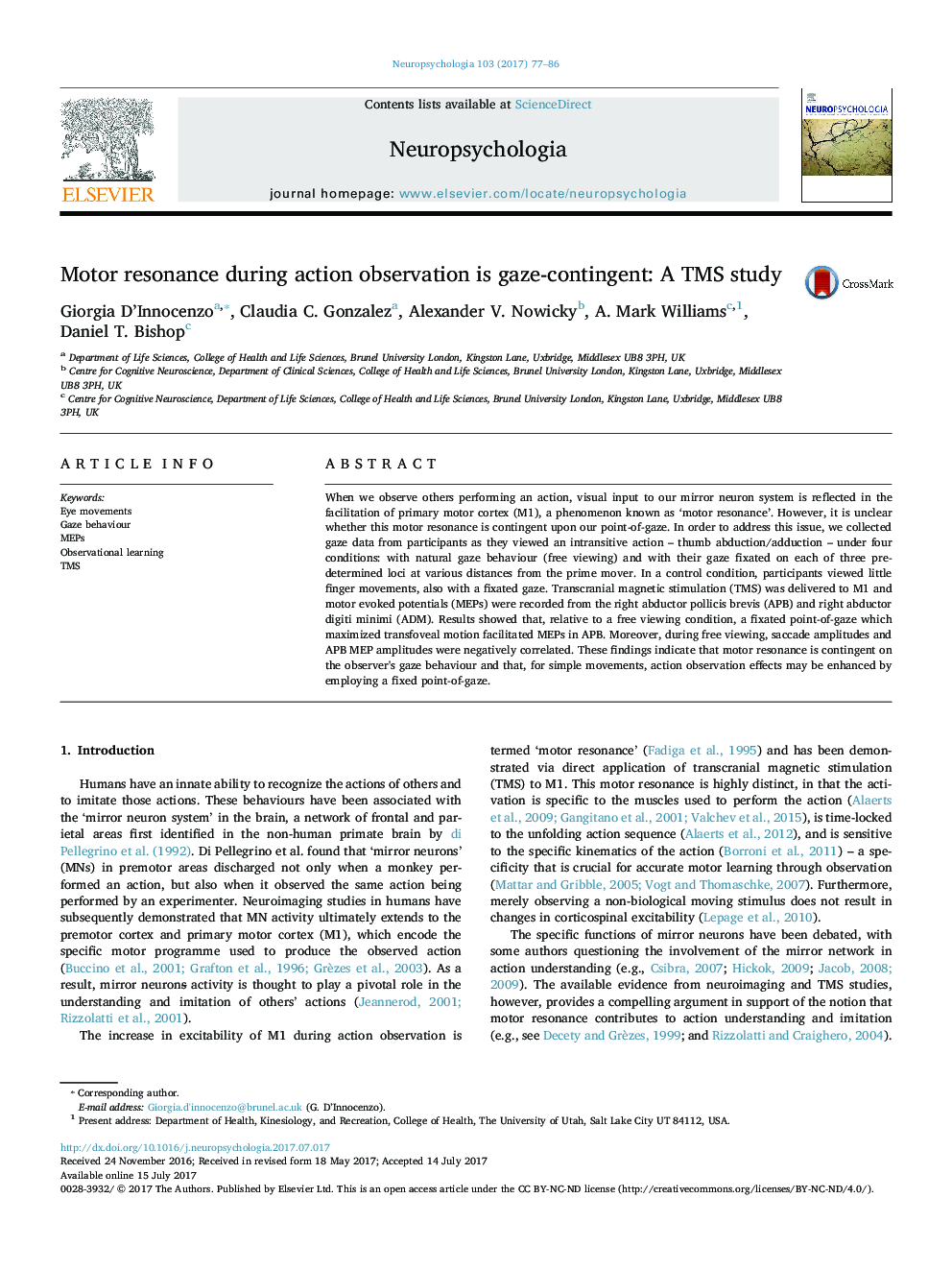| Article ID | Journal | Published Year | Pages | File Type |
|---|---|---|---|---|
| 5045092 | Neuropsychologia | 2017 | 10 Pages |
â¢Manipulation of gaze during observation of thumb motion modulated motor resonance.â¢Visual fixations that maximized transfoveal motion increased motor resonance.â¢MEP amplitude was negatively correlated with saccade amplitude.â¢Directing observers' gaze during AO may optimise information pickup.
When we observe others performing an action, visual input to our mirror neuron system is reflected in the facilitation of primary motor cortex (M1), a phenomenon known as 'motor resonance'. However, it is unclear whether this motor resonance is contingent upon our point-of-gaze. In order to address this issue, we collected gaze data from participants as they viewed an intransitive action - thumb abduction/adduction - under four conditions: with natural gaze behaviour (free viewing) and with their gaze fixated on each of three predetermined loci at various distances from the prime mover. In a control condition, participants viewed little finger movements, also with a fixated gaze. Transcranial magnetic stimulation (TMS) was delivered to M1 and motor evoked potentials (MEPs) were recorded from the right abductor pollicis brevis (APB) and right abductor digiti minimi (ADM). Results showed that, relative to a free viewing condition, a fixated point-of-gaze which maximized transfoveal motion facilitated MEPs in APB. Moreover, during free viewing, saccade amplitudes and APB MEP amplitudes were negatively correlated. These findings indicate that motor resonance is contingent on the observer's gaze behaviour and that, for simple movements, action observation effects may be enhanced by employing a fixed point-of-gaze.
